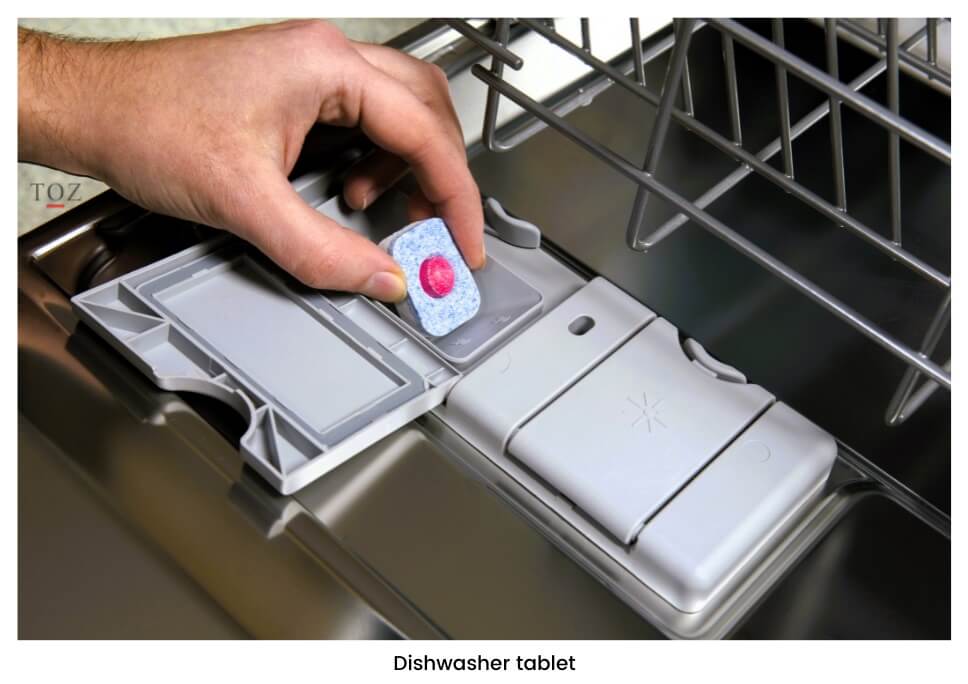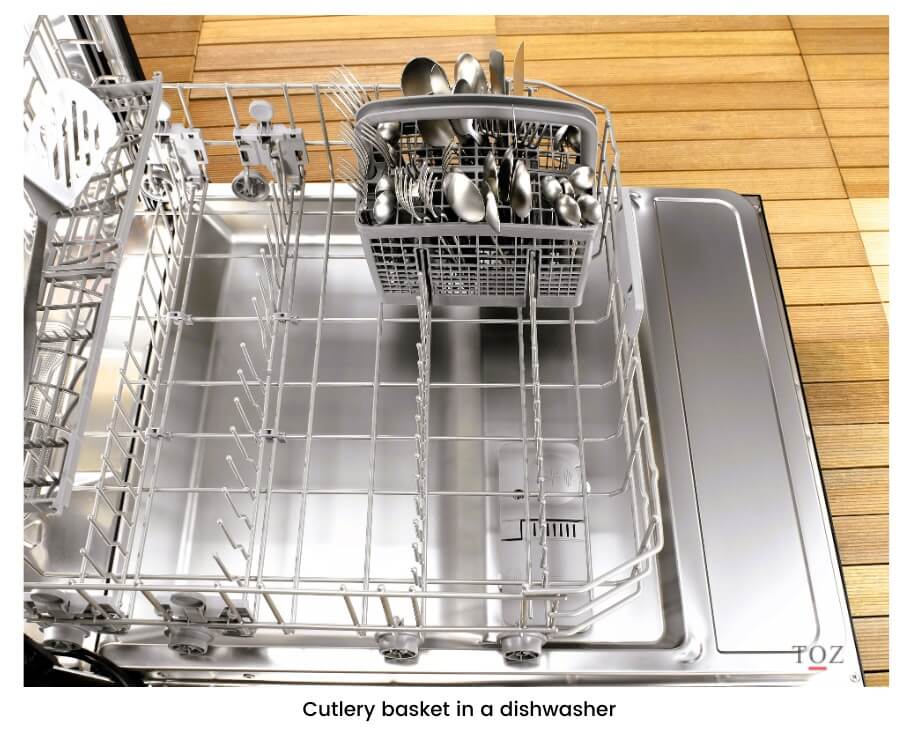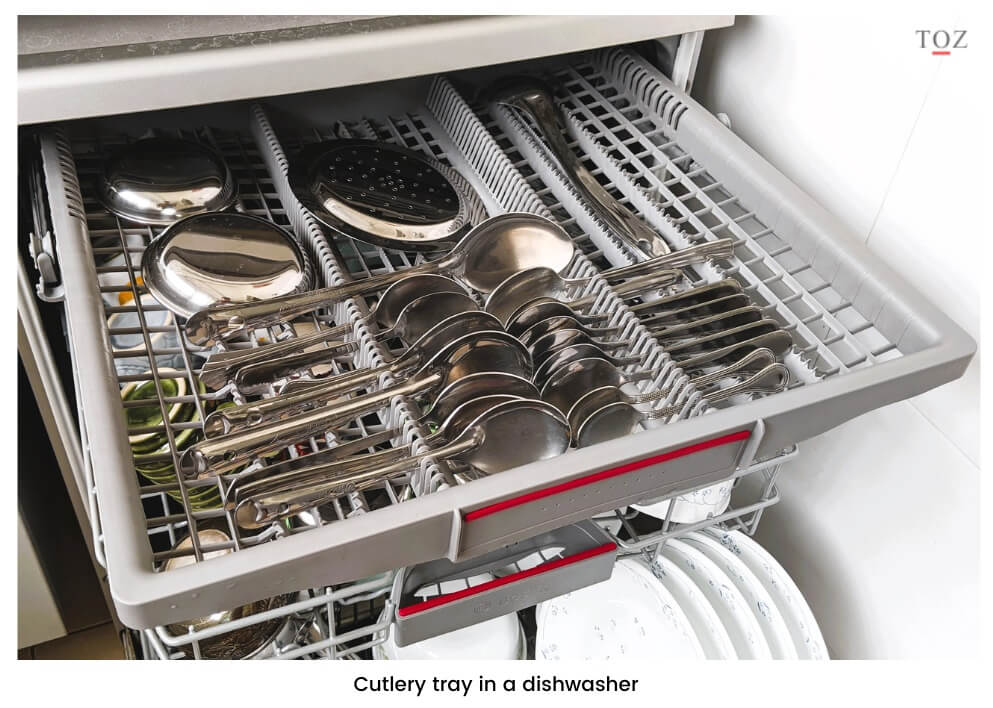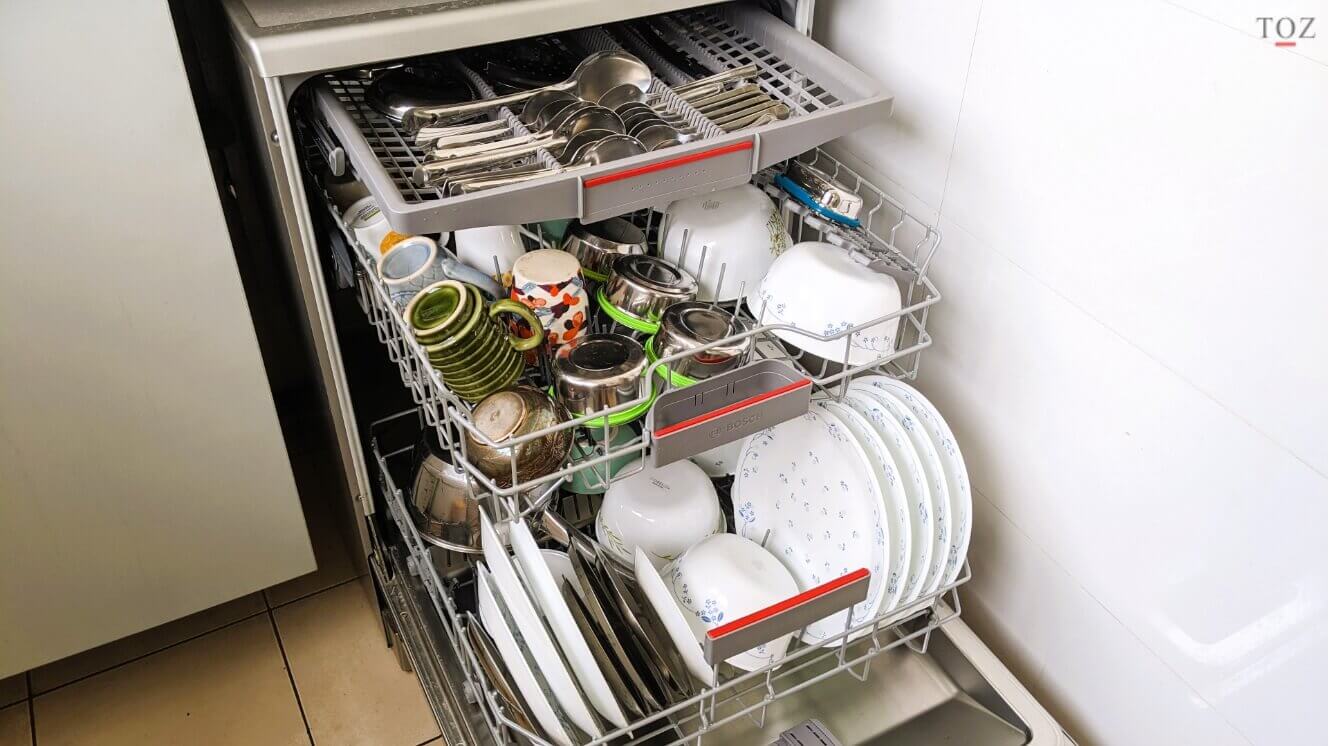1. Introduction
By the end of this post, you would have a good understanding of how to go about selecting the right dishwasher for your home. You would be clear about what features to keep an eye out for, which of them are critical and which ones are just marketing gimmicks. I will not get into brand or model specifics since they will keep changing with tweaks here and there. Instead, I will focus on the key factors that will help you make the right decision. The objective of this dishwasher buying guide is to help you think through your needs in more detail, understand key aspects to keep in mind and select a model that’s optimally suited for your needs.
2. Is a dishwasher worth buying?
The covid-19 pandemic taught me a lot of things – the importance of a dishwasher being one of them 🙂
Dishwashers are not that common in India as they are in some other countries. Up until a few years back, the dishwasher was perceived as a luxury item that wastes a lot of water and can clean only lightly soiled dishes and utensils.
But those days are gone. Today’s dishwashers are power efficient, use less water and there are models specifically designed for cleaning utensils used for cooking Indian dishes.
Personal experience:
I wanted to test this claim made by dishwasher companies about lower water usage. So I measured our water usage for a month before and after buying a dishwasher and I was surprised to see that it was actually 68% lower with the dishwasher. Some companies claim higher savings, but this is what I got based on our usage. Our apartment complex has separate real-time water meters for the kitchen and bathrooms to help us monitor and save water; so it was easy for me to run this test.
Over time, I have realised that the benefit of a dishwasher lies not just in the lower water usage, but also the level of convenience it brings. It frees up time, the sink is mostly empty, no smell of unwashed dishes (that can potentially attract pests) and there is a much lower dependency on a person (to clean the dishes), be it a family member or a house-help. I think the dishwasher will soon become as common as the washing machine.
3. How does a dishwasher work?
For starters, it’s important to get atleast a basic idea of how a dishwasher works.
A dishwasher has several sprays located at different points in the machine along with rotating sprays. This ensures that utensils get prayed from all sides. Utensils are loaded in a way to ensure that water doesn’t collect in them during the wash. For example, plates are loaded vertically, while bowls/cups/vessels are loaded upside down.
A dishwasher uses 3 additives for cleaning:
3.1 Dishwashing detergent
This typically comes in the form of a powder or liquid. This needs to be added each time you run the dishwasher.
3.2 Dishwasher salt (this is actually a water softener)
Our water supply may not always provide soft water, it may contain dissolved salts that leave stains on our dishes after drying. The dishwasher salt softens the incoming water before using it to clean the utensils. This ensures that there are no salt deposits on the utensils at the end of the wash. The water softener typically comes in the form of granules or a powder and needs to be added in bulk in a specific compartment of the dishwasher. The machine uses a part of the salt in every cycle based on the hardness of the water supply. Dishwasher salt is mandatory for running the dishwasher.
3.3 Rinse-aid
This is a liquid additive. The common description of rinse-aid you will find mentions that it makes utensils sparkling clean leaving no water marks. But the engineer in me was not satisfied with this rather vague description 😊; so I dug deeper.
Let me explain. Water particles have a tendency to stick to surfaces due to a property called surface tension. This leads to water sticking to dishes/utensils after a wash, thus increasing the time taken for the dishes to dry. Once the wash cycle is complete, the dishwasher uses heat to dry the utensils. The water dries up leaving water marks behind – these are more visible on items made of glass.
Rinse-aid is liquid additive that reduces the surface tension of water. This reduces the amount of water sticking to utensils. Water particles quickly slide down, the utensils dry quickly and leave no water marks behind at the end of the drying cycle.
Rinse-aid is added in bulk into a specific compartment of the machine and the machine uses very tiny amounts of it per cycle.
Unlike the dishwasher detergent and salt, rinse-aid is not mandatory for running the dishwasher.
What is a dishwasher tablet?

While you can buy and add the above 3 additives (detergent, salt and rinse-aid) separately in the dishwasher, you also use these dishwasher tablets that have all 3 in them. You simply need to add one tablet for each cycle. Tablets are convenient, but turn out to be costlier in the longer run, especially if you run lighter loads.
4. Factors to keep in mind when buying a dishwasher
Currently, there are just a handful of dishwasher options in the market. I’d probably add more points as this segment develops further. Here are the main factors to keep in mind:
4.1 Water efficiency
Water supply will only get scarce and expensive over the coming years. It may cost you a bit more now to buy a water-efficient model, but you will save a lot more in the longer run as water becomes more expensive.
4.2 Flexibility
Look for a model that gives you flexibility to wash larger utensils as well. It could simply be an adjustable or removable rack, but that can be very useful.
4.3 Cutlery basket vs cutlery tray

Most models will have a basket for cutlery that is placed in the lowest tray. However, some models will have a cutlery tray as the topmost tray. Such models are more space efficient as they utilise the available space in the upper part inside the machine without increasing the overall dimensions of the machine. This eliminates the need for a cutlery basket and the saved space can now be used for other vessels, thereby increasing the machine’s capacity. These models may cost marginally higher, but the increased capacity helps you save more over time.

4.4 Serviceability
As a general rule, always research about the customer service level of a brand before buying their product. And make sure you check the service levels in your locality as service levels can vary significantly across cities and even areas within cities.
If possible, keep the dishwasher near the sink, be it in the kitchen or utility area. It will be convenient in case you want to pre-wash any heavily soiled vessels/utensils before placing them in the dishwasher.
4.5 Is a smart dishwasher worth buying?
Smart dishwashers enable you to control the machine remotely via a smartphone app so that the wash cycle is complete by the time you reach home. This can be useful when you are pressed for time and there is no one at home to switch-on the dishwasher. Think of your lifestyle and see if this feature would add enough value for you to pay extra for a smart model.
Personal experience:
Personally, I didn’t see much value in a smart dishwasher for my lifestyle, so I went ahead with a “non-smart” model. These models usually come with a timer or a delayed-start feature (similar to what you find in washing machines), where you can set up a time when the dishwasher would start running. I usually set the timer on my dishwasher at night before going to bed, so that it starts running in the wee hours of the morning and is done washing by the time we wake up. Unlike a washing machine, dishwashers are silent, as there is no large moving component like a drum. So even if the dishwasher starts running at 4am, it doesn’t disturb us or the neighbours.
5. Is a dishwasher stand necessary?
Dishwasher stands are completely optional; it only helps in case you want to clean the area below the machine.
In case you intend to place the dishwasher under the kitchen platform/countertop, make sure to check if there is enough vertical space above the dishwasher so that you can slide it below the countertop after placing it on the stand.
If you are designing your kitchen from scratch, you could add a few inches to the height at which the platform/countertop is fixed, so as to accommodate the dishwasher. However, do keep in mind that raising it may make it difficult for shorter people to use the sink.
Dishwashers are lighter than washing machines, making them easier to move – this is because manufacturers specifically add weights to a washing machine to ensure it remains stable when the drum rotates fast during spin cycles. The slowly rotating sprays in a dishwasher doesn’t affect its stability, so additional weights are not needed.
Personal experience:
I decided to keep my dishwasher below the countertop in the utility area. So when designing our utility area, I fixed the kitchen countertop 4 inches higher to accommodate the dishwasher. The height increase wasn’t an issue for us. However, I ultimately didn’t see the point in buying the stand, as the area under the dishwasher rarely gets dirty and its quite easy to slide the dishwasher out to clean the floor below. Looking back, I could have installed the countertop at normal height.
6. What you should not put in a dishwasher
With all the convenience that appliances provide, come their restrictions. Just the way you need to be particular about avoiding putting metals in a microwave, there are some materials you should avoid putting in a dishwasher.
- Certain non-stick cookware
Dishwashers use high-pressure water jets to clean utensils. This could lead to the non-stick coating coming off, especially if it is a low-budget product. If a non-stick cookware is dishwasher-safe, it will be explicitly mentioned on the box or the bottom of the vessel.
- Some plastic products
Dishwashers use hot water that some plastics may not be able to handle. However, several plastic products are now dishwasher-safe and manufacturers explicitly mention this on the box or the product itself.
- Wood – Hot water can warp wood, so you must avoid putting wooden ladles in the dishwasher.
- Aluminium cookware – The hot water can stain the surface and dull the finish.
- Cast iron – The dishwasher detergent quickly strips the natural non-stick layer (that develops on the vessel over time) leaving the vessel vulnerable to rusting.
- Sharp knives – The powerful water water-jets may dull the knife blades.
Personal experience:
We rarely use non-stick cookware at home given the potential health risks they pose. Even if we do end up using them occasionally, we avoid putting them in the dishwasher and hand wash them instead. I’ve also made it a habit to check if a product is dishwasher-safe before buying it.
7. Maintaining your dishwasher
Just like washing machines, dishwashers also need to be de-scaled. Apart from regularly cleaning the filter of your dishwasher, you get rid of the accumulated limescale by running a de-scaling cycle. The de-scaling powder/liquid is often the same one that’s used in washing machines.
The installation executive will use a device to measure water hardness in your home and will let you know the frequency of running the de-scaling cycle.
I also recommend cleaning the filter every now and then – you just need to place it under running water for a couple of minutes, that’s all.
8. Summary
- Dishwashers not only save water, but also bring a lot of convenience into your daily life.
- Dishwasher detergent and salt are mandatory additives; rinse-aid is not.
- Dishwasher tablets are convenient, but costlier.
- Models with a cutlery tray are more space efficient than those with a cutlery basket. This leads to a higher capacity and long-term cost savings.
- A dishwasher stand is not really necessary; they are lighter than washing machines and hence are easier to move.
- Remember to de-scale your dishwasher regularly as suggested by the manufacturer – it improves the longevity of the machine, keeps it efficient and prevents degradation of wash quality.
Have questions or queries?
If you have any queries, feel free to mention it in the comments section below; I will do my best to answer them. Please allow a few days for me to respond. If I (or any other reader) can answer it, then good. If not, atleast it will be something for the next reader to keep in mind. In case you have any learnings or experience to share, instead of messaging me directly through the contact page, I would recommend mentioning it in the comments section for the benefit of other readers.
If you are looking to buy new home appliances, you can refer to a few of my other posts on:
- Choosing the right washing machine
- Selecting the right refrigerator
- Kitchen chimney, hob and exhaust fan
- A comparison of a microwave, OTG and convection oven – know which one is best suited for your needs.
Share this post:







Hi, I live in France, had so far 3 different dishwashers and totally agree with you remark not to buy so called “smart” dishwashers. I find it similar to those TVs with Picture-in-Picture and such.
Its nice when you buy it, but in reality very few of us use it.
When it comes to dishwaser I use generally 2 functiins -Eco, which may take 3-4 hours, but is very economical and cleans very good and “Fast wash” which is suitable if ,you have a party and need to wash drinking glasses and plates in a short time.
Anyway, nice article. Thank you.
Thanks Vojtech. Even I end up using the ECO mode 95% of the time. I think having so many additional programs just gets confusing for many people. The additional R&D costs for those special programs ultimately get borne by the customer who rarely uses it. I think companies should have atleast 1 model which is simple with just 1-2 programs that priced a bit lower. I’m sure a lot of people will opt for it, and then the company can decide if it’s worth investing in developing another wash program.